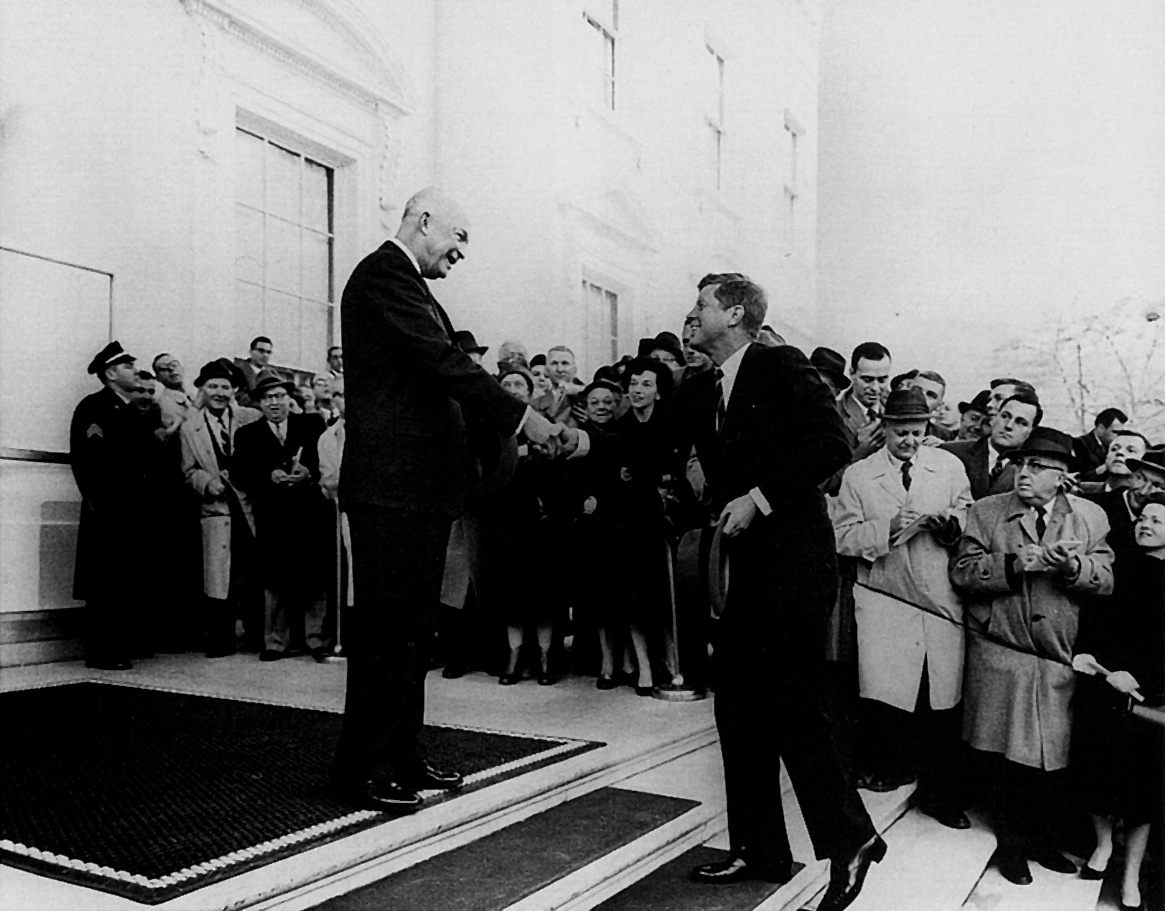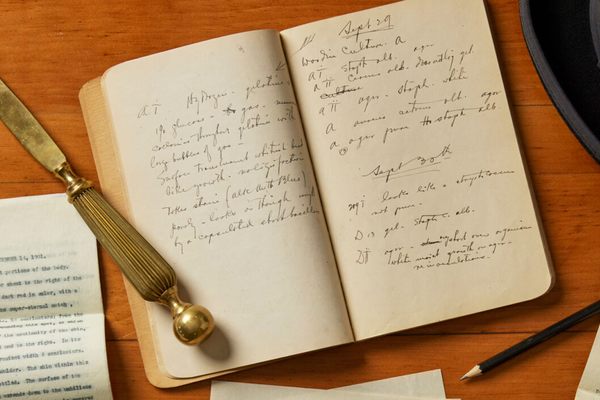Trump and Obama’s Post-Election Meeting Might Not Have Been History’s Weirdest
Occasionally, this aspect of the “peaceful transition of power” involves secret helicopter buttons and wall safes.

Two days ago, President Barack Obama told voters in Michigan that Donald Trump was “temperamentally unfit to be Commander in Chief.” In August, Trump called Obama the “worst President in history,” just the latest in a series of attacks that included impugning his legacy, questioning his sanity, and, of course, leading a years-long guerrilla inquest into his citizenship status.
It’s not the kind of stuff that tends to lead to friendly playdates. But yesterday, Obama and Trump met privately in the Oval Office, to discuss a future that may require them to look past a few of these accusations. Like dozens of presidents before them, the outgoing and incoming presidents held their noses, stuck their hands out, and partook in a Democratic tradition—the post-election White House meeting.
As the Associated Press pointed out in 2008, the Constitution does not mention, let alone require, such a meeting. Federal law is also silent on the issue. Like the concession phone call, it has somehow slipped into the series of actions between an election and an inauguration—a way to keep things running smoothly. And the parties involved tend to bring their all to these meetings, whether that’s an impromptu lecture, a surprise helicopter show, or just a hearty dose of goodwill.

Sometimes, the meeting provides an opportunity for true healing, as officials set aside polarizing campaign rhetoric in favor of common goals. Dwight D. Eisenhower and John F. Kennedy, for example, ended up having a great chat in 1960. As LIFE later reported, Eisenhower, who had previously dismissed Kennedy as a “young whippersnapper,” was very impressed by his successor, who had prepared extensively for the meeting.
“[Eisenhower] was overwhelmed by Senator Kennedy, the depth of his questions, his grasp of the issues, and the keenness of his mind,” a White House aide told LIFE. And Kennedy, prepared as he was, was newly shocked by the difficulties that would soon face him. As Eisenhower briefed him on the economy and foreign policy, reality hit him hard—“I was finding out that things were really just as bad as I had said they were during the campaign,” he later told his aides.
Part of the meeting involved blowing off some steam, though. The outgoing president was eager to show his succesor one of his favorite new additions to the White House: the panic button on the Oval Office desk that summons an emergency helicopter. Eisenhower had installed this button a few years earlier, and was proud of it. “He pushed the button, and Kennedy watched the fluttering helicopter coming down outside the windows within a few minutes,” Kennedy’s aides reported. (It’s unclear whether this button still exists.)

Secret White House gizmos have proven to be a great bonding tactic. In 1968, Lyndon B. Johnson invited Richard Nixon to the White House, once again after a fraught campaign. As the once and future First Ladies toured the building room by room, Johnson took a moment to show Nixon a hidden surprise. “On our way to the West Wing, we stopped in his bedroom,” Nixon later recalled in his memoirs. “‘I wanted you to know about this,’ Johnson said as he showed me how to open a small safe concealed in the wall.”
Other meetings have fallen a bit flatter. Times of national crisis make for transitions that can get “really bitter,” says Leo Rubiffo, a historian at George Washington Univeristy. In 1932, as the Great Depression raged, Herbert Hoover had taken to calling Franklin Roosevelt a “chameleon on plaid,” while Roosevelt considered Hoover a “fat, timid capon.”
When the two met up on November 22nd—the first of three meetings they would eventually hold between Election Day and Inauguration Day—Hoover had his Treasury Secretary lecture Roosevelt on the gold standard, and then called him “very badly informed and of very little vision.” (Their other two meetings didn’t go much better.) In 1952, as the Korean War dragged, Eisenhower had trouble forgiving Harry Truman for accusations made on the campaign trail. Their meeting went so badly that Eisenhower, pondering the limo ride on Inauguration Day, wondered “if I can stand sitting next to that guy.”

And no matter the overall climate, it’s an emotional moment for the outgoing party. “It struck me how hard it is for a defeated president to suddenly see cameras facing in the other direction,” former Vice President Walter Mondale told the AP in 1992, recalling his own experience watching Jimmy Carter cede to Ronald Reagan in 1980. Even for those who remain undefeated, but instead have maxed out their term limit, this is the moment they begin letting go: “Your formal transfer occurs on January 20th, but the psychological transfer occurs then,” Mondale said.
As for this particular meeting, Rubiffo predicted “a mutual attempt at cordiality.” “Obama is by temperament conciliatory,” he says. “Trump is—at least in part—a dealmaker. He will likely recognize that he has nothing to gain now by continuing the abrasive tone of his campaign.” Although their discussion was private, some details have emerged. The two met for 90 minutes—much longer than planned. Obama called the meeting “excellent,” while Trump said he considered it “a great honor.” Michelle Obama toured Melania Trump around the White House.
But one part of the tradition was conspicuously absent: the photograph, generally taken outside the south entrance of the White House, of both families greeting each other. When they notice this absence in the history books, people of the future will have to draw their own conclusions.
















Follow us on Twitter to get the latest on the world's hidden wonders.
Like us on Facebook to get the latest on the world's hidden wonders.
Follow us on Twitter Like us on Facebook